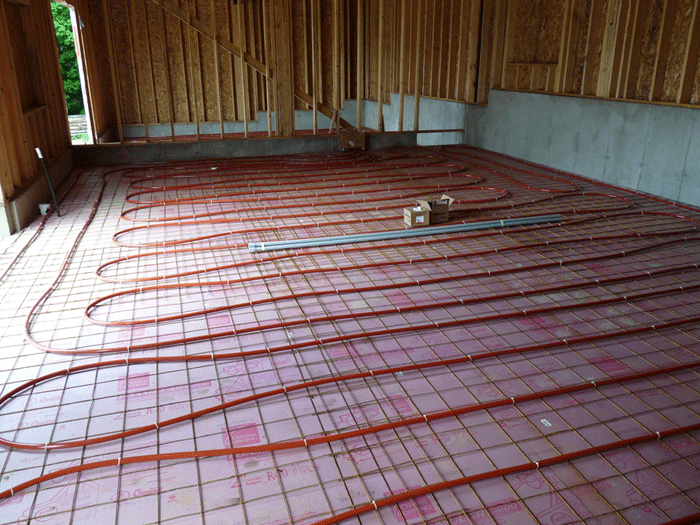

Pole barn radiant floor heating cost install#
The total cost to install a hydronic floor heating system throughout the home will range from $19,000 to $48,000. Hot water tends to hold onto heat well, making it decently energy efficient and available for a large number of homeowners. Hydronic radiant floor heating systems use hot water supplied by a hot water heater or a boiler to move through pipes to warm the home. Hydronic floor heating systems cost around $6 to $20 per square foot. You also can install a boiler, which costs around $3,500 to $7,700. If it doesn’t, the cost of installing a new water heater is around $770 to $1,450. When installing a radiant floor heating system, part of the process for installing the system is ensuring your water heater can keep up with the new demand for hot water. It’s always best to get at least three quotes from local plumbers to compare prices. Licensed plumbers charge between $45 to $200 per hour, depending on the project and their quotes. It takes around 12 hours of labor for every 1,000 square feet of heating material to complete the job. LaborĮxpect to pay anywhere from $550 to $2,500 for labor costs on a radiant floor heating project. Keep in mind that this solution isn’t always available and may not be the best option for your home. You’ll significantly decrease labor costs with this option because there’s no need to bend pipes and destroy your current flooring.

Rather than starting from scratch and using your own custom layout for radiant floor heating tubing, you can opt for pre-fitted subflooring. This pricing reflects only the portion dedicated toward cooling rather than the project's entire cost. Labor, the chiller and dehumidifier, and basic piping materials add another $35 to $45 per square foot to install radiant cooling. Cool air falls rather than rises, so radiant cooling requires overhead installation.

Add a supplementary radiant cooling system that goes into the ceiling to help cool down the home during the warmer months. Radiant heating helps in the cooler months, but you’ll get the most for your money if you can use your system year-round. The cost of a smart thermostat is around $350 on average. This setup also requires a smart thermostat or programmable thermostat to maintain the temperatures of each zone. Temperature zones allow you to set the desired temperature of the water to heat a specific room or area, such as a primary bedroom and guest bathroom.Īdding a temperature control system may increase the project's total cost by $1,000 to $15,000, depending on the number of zones desired. If you want to install radiant floor heating throughout the home-or in several rooms-you may consider incorporating temperature zones. The general rule of thumb is: The more square footage you decide to heat, the less you’ll pay per square foot. home) you should expect to pay anywhere from $13,800 to $46,000. To heat a 2,300 square foot home (the average size of a U.S. Radiant floor heating costs anywhere from $6 to $20 per square foot. Depending on where you live, your preferred energy source, and your budget, you’ll need to choose between the five current systems (more on this below): There are several different types of radiant floor heating systems on the market. Resource CenterĪs with any contractor job, quite a few factors impact the final cost of installing radiant floor heating, including project complexity, whether you opt for temperature zones, and your current water heater setup. The slab I have is 6" thick with 2" foam beneath it so it stores a lot of heat.Find hiring guides, material costs, expert advice, how-to's and more. Only downside with in-floor is that it does take a while to heat up from cold but as long as you maintain a consistent temp day / night it's very efficient. Instead look into an IBC boiler made in Canada. Boiler was originally a Triangle Tube but I would not recommend them. Attic has about 3 feet or so of insulation blown in (I have to take the installers word on that since I'm not able to get up there lol) But I can say I have zero ice buildup anywhere on the roof. It's a Morton building so the walls are nearly 12" thick and I believe R-38. Tubing used was 1/2" pex and run 12" apart except for around the perimeter where it was run 6" apart. That said all of the rooms upstairs do not have doors on them so air is able circulate freely. Honestly I do not notice any temp difference from floor level to the upstairs.

insulation, vapor barrier, tubing size, etc. Could you please provide a little more information on your system? i.e. I was told that radiant floor heat will not work very good due to the tall ceiling's. I am in the planning stages of a 40x50x18 pole barn and am trying to figure out the best heating system.


 0 kommentar(er)
0 kommentar(er)
